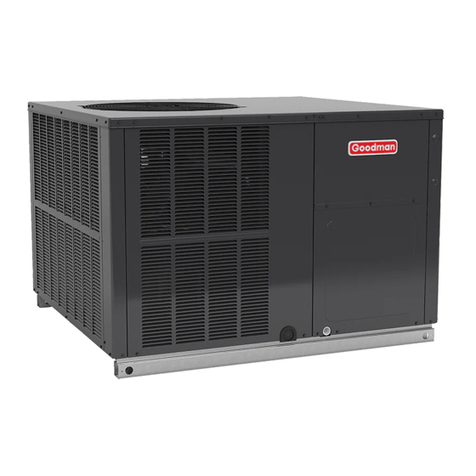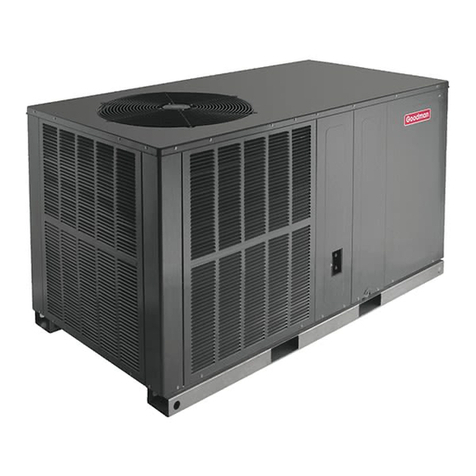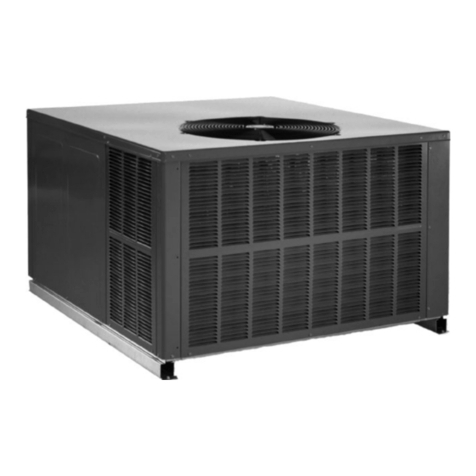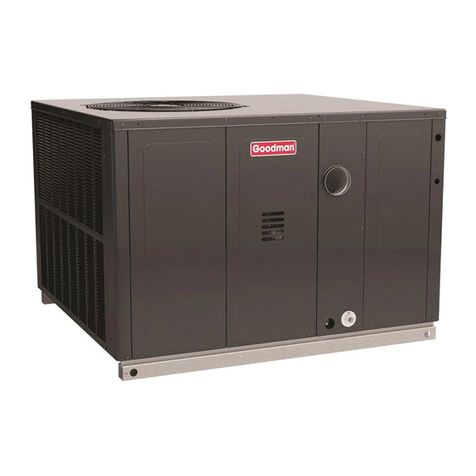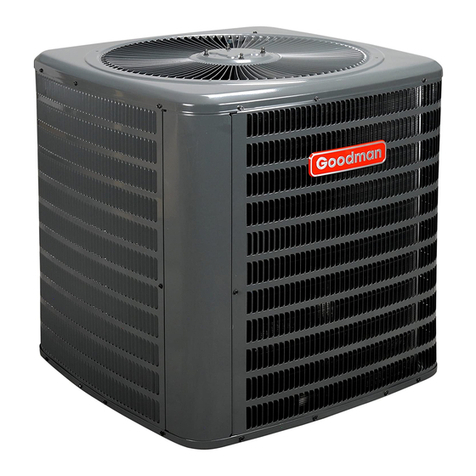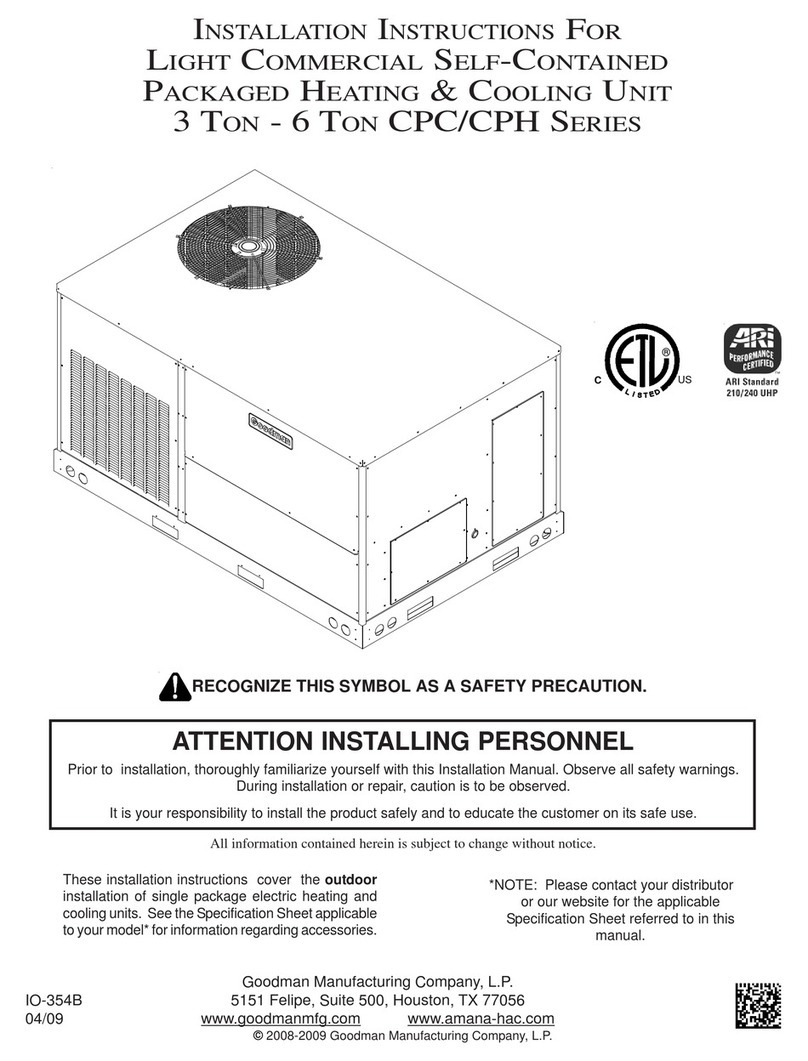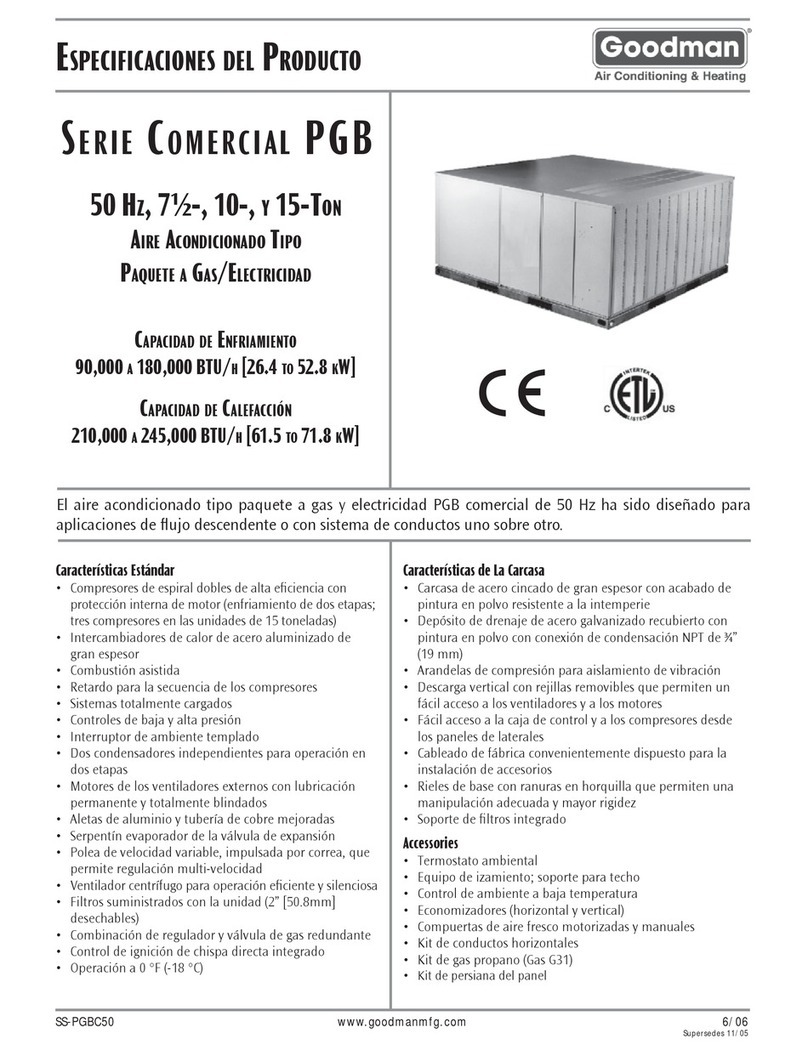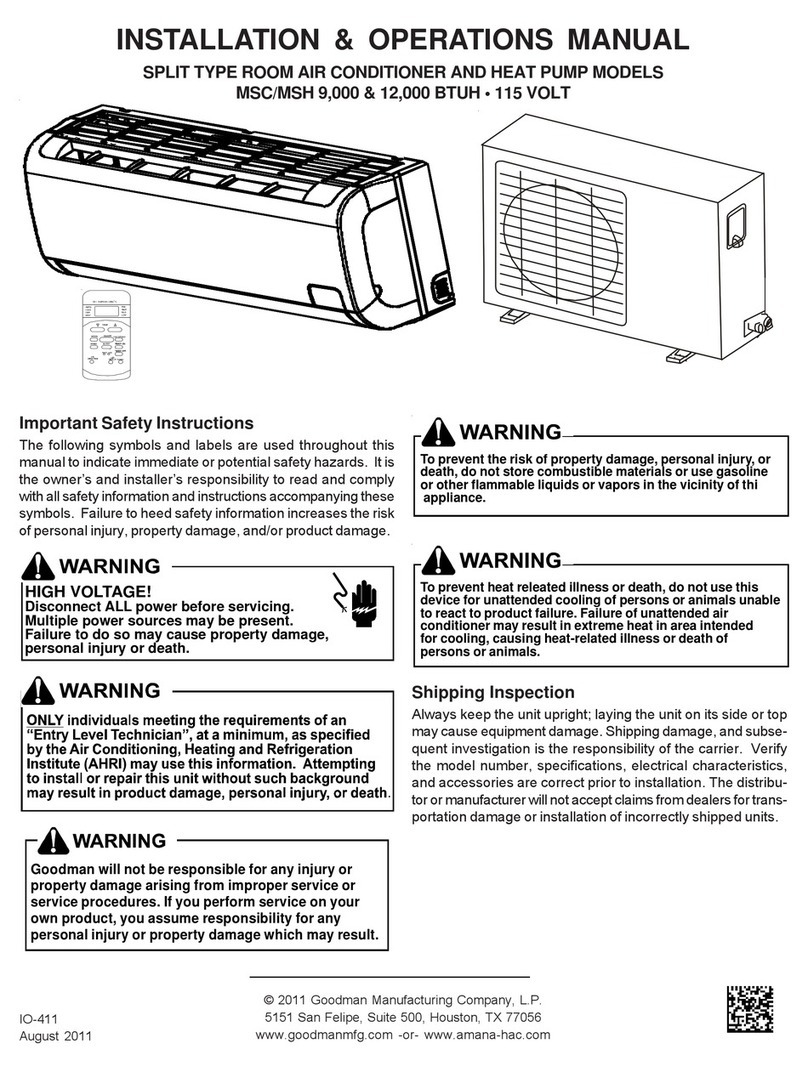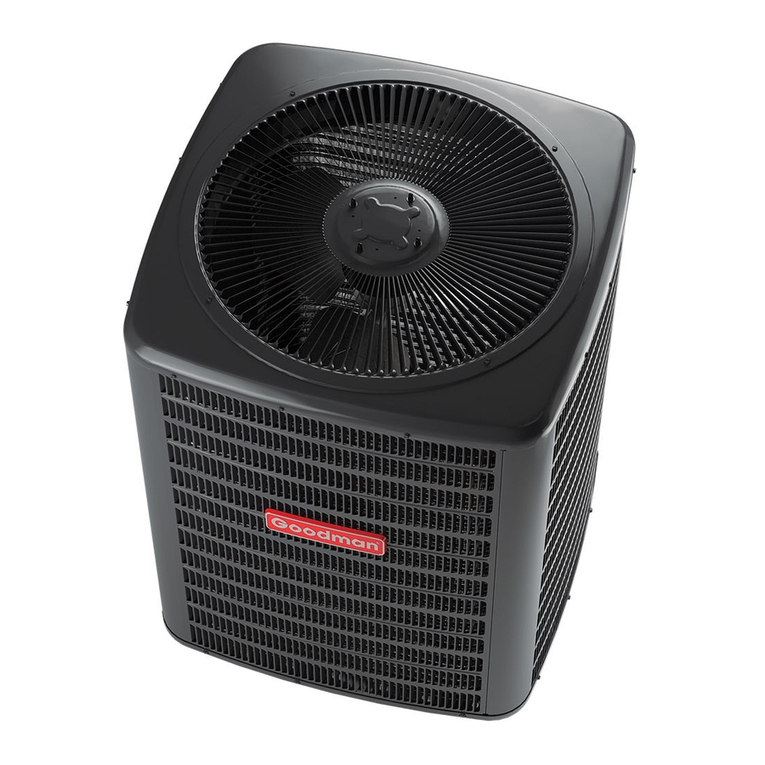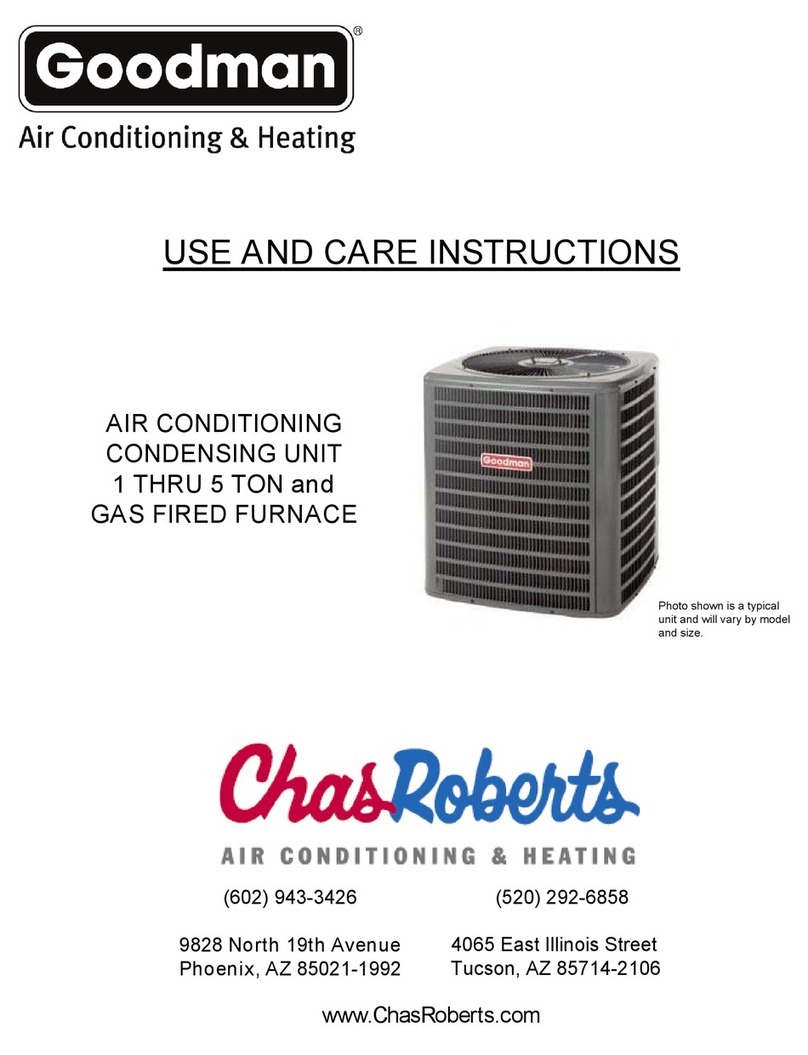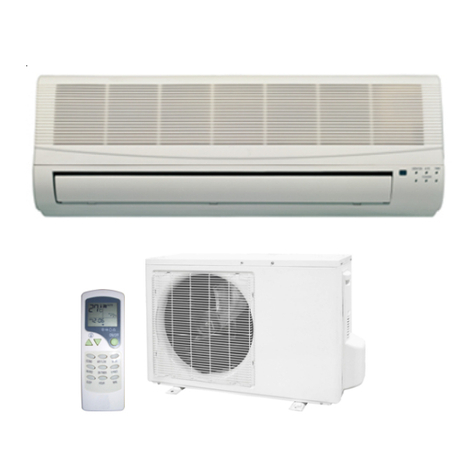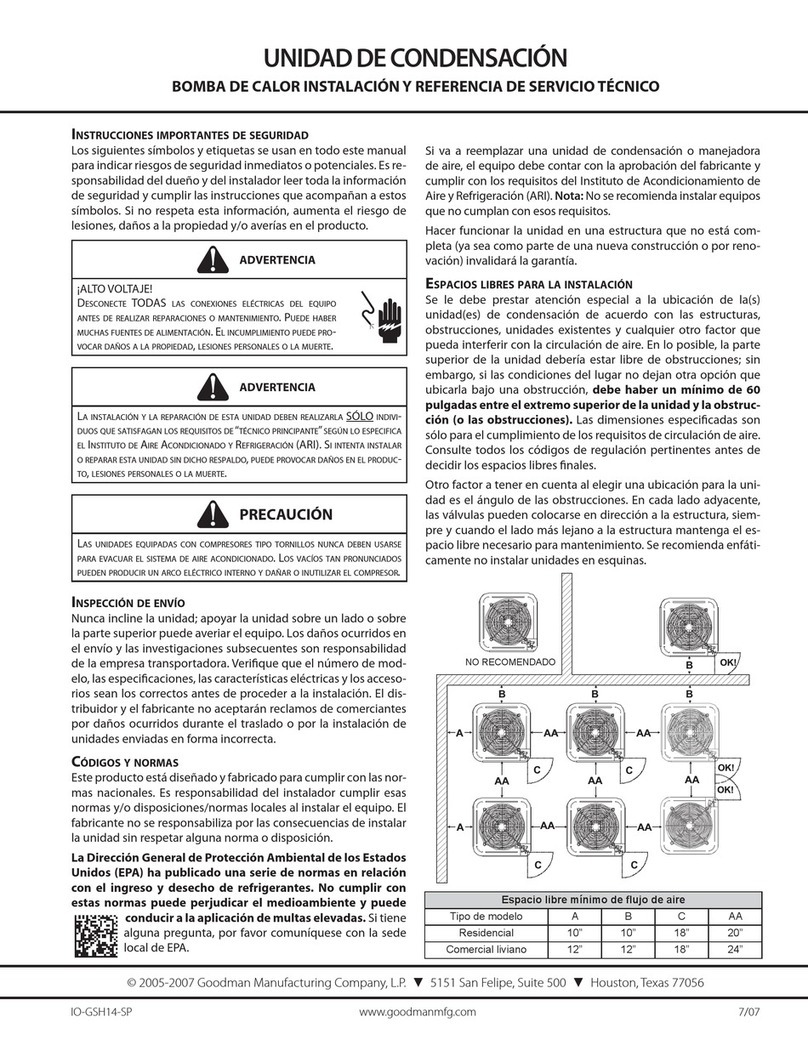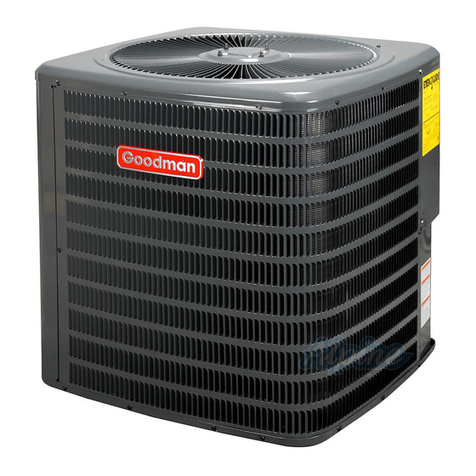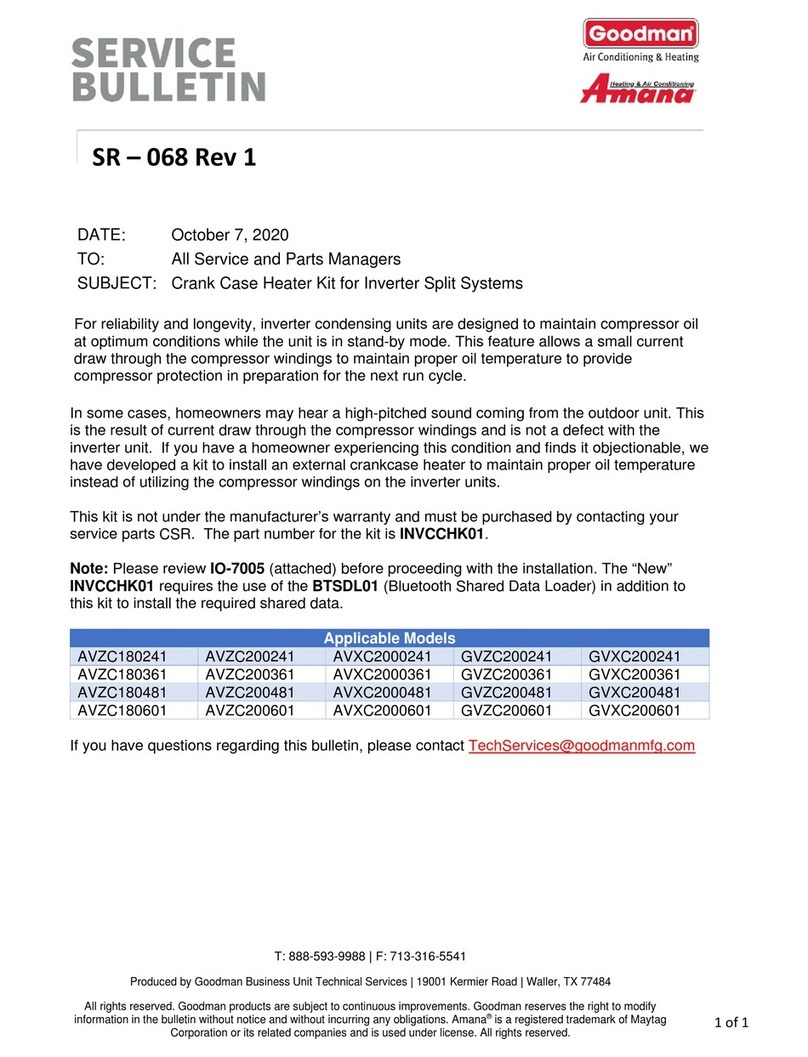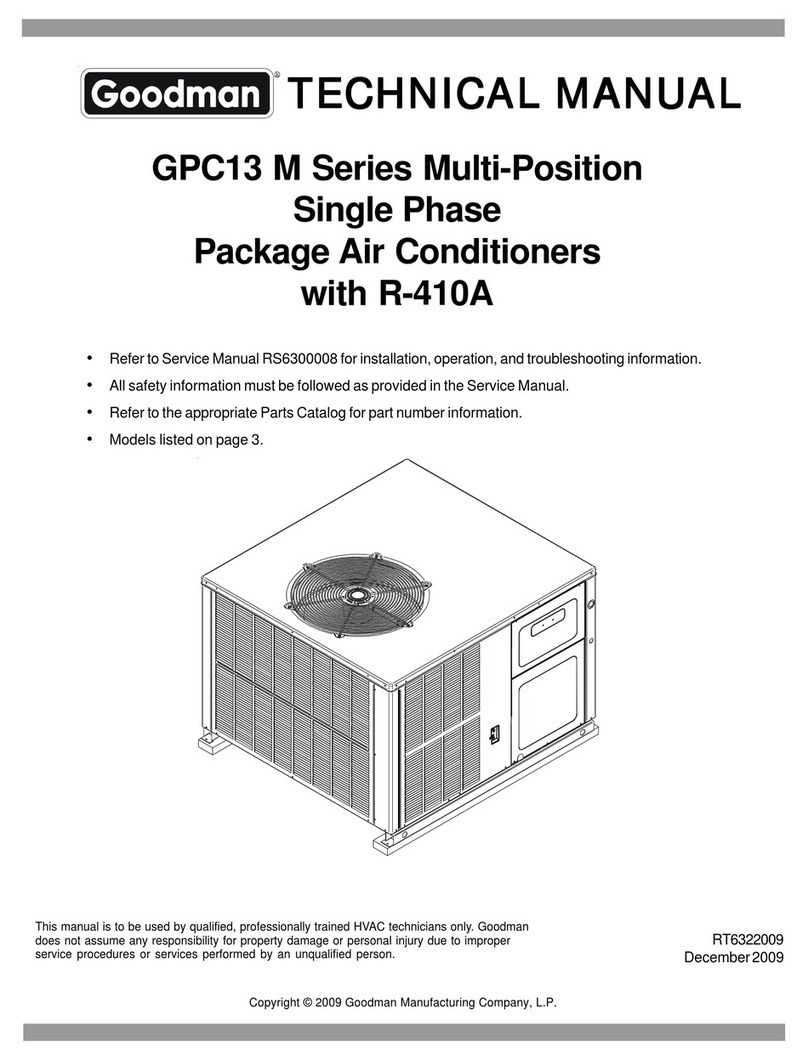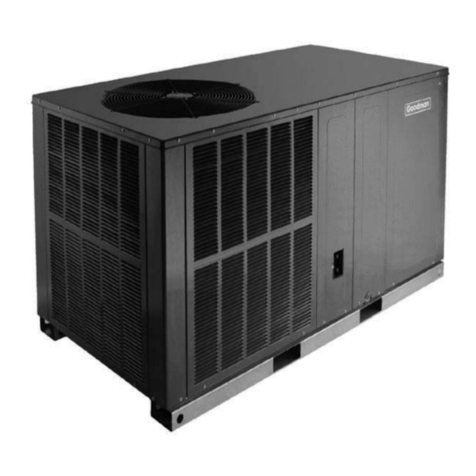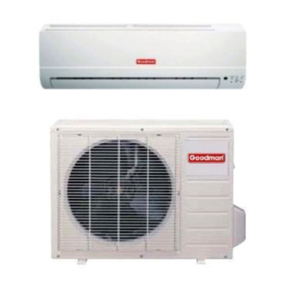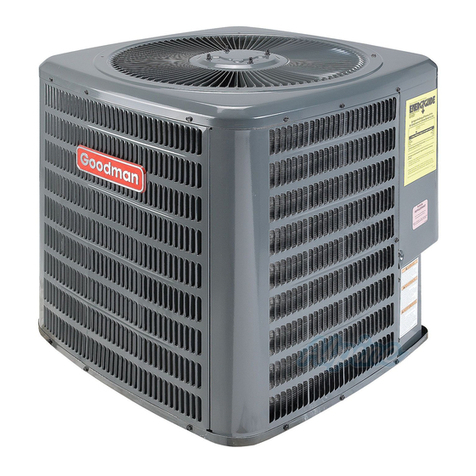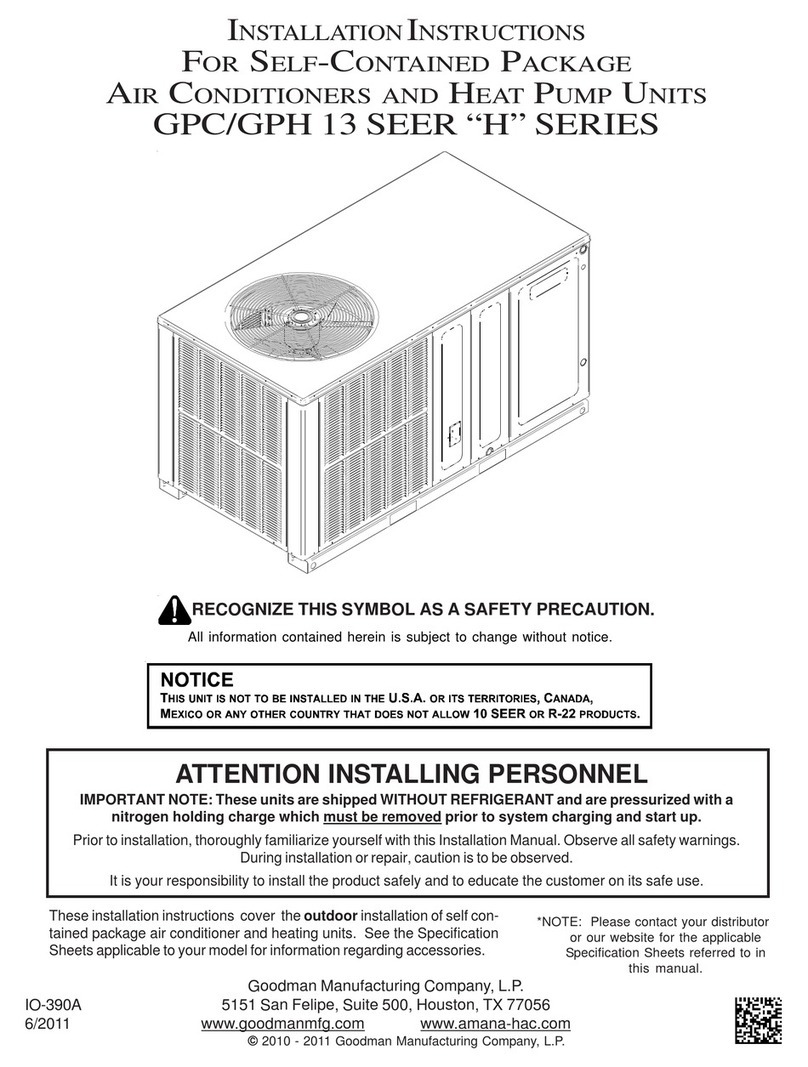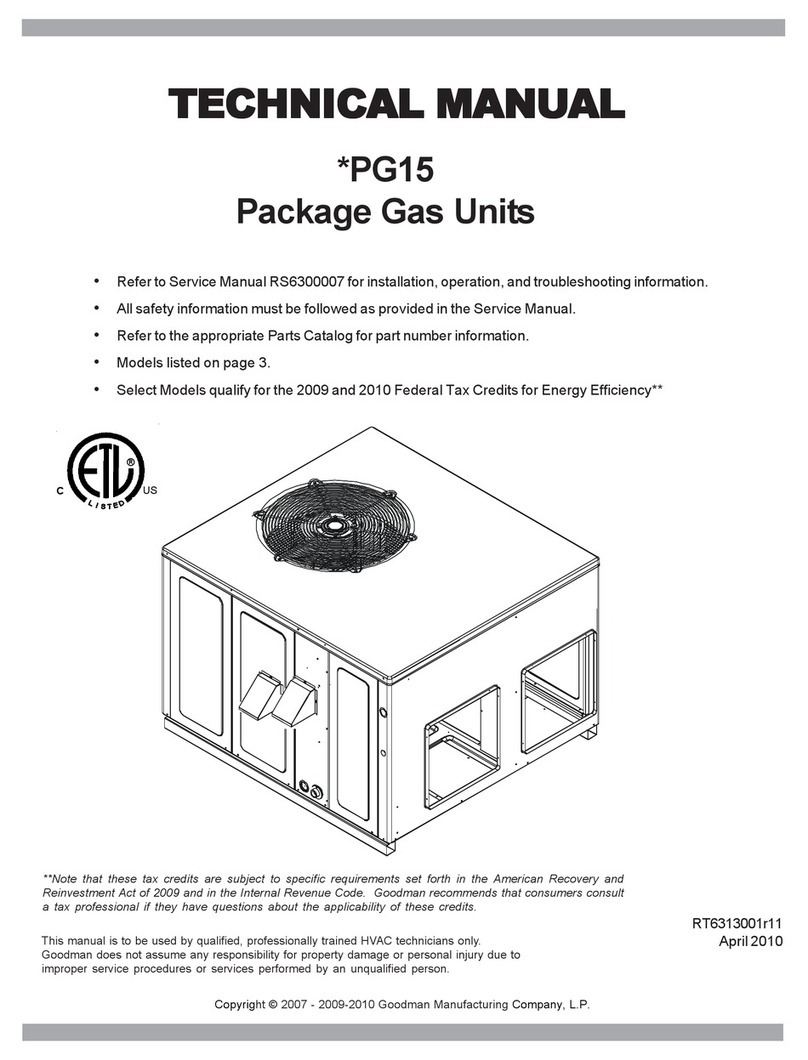
4
Refrigerant Line Connections
NOTICE
THIS UNIT IS SHIPPED WITH A NITROGEN/HELIUM
HOLDING CHARGE ONLY. UNIT MUST BE
EVACUATED AND CHARGED PER INSTALLATION
INSTRUCTIONS WITH REFRIGERANT LISTED ON
SERIAL RATING PLATE.
NOTE:Holdingchargemustberemovedbeforebrazing. Open
servicevalvesslowlytoremoveholdingcharge. Closevalves
beforebrazingtopreventcontaminantsfromenteringsystem.
IMPORTANT:To avoid overheating the service valve, TXV
valve, or filter drier while brazing, wrap the component
with a wet rag, or use a thermal heat trap compound as
recommended by the compound manufacturer. Use a
brazing alloy of 2% minimum silver content. Do not use
flux.
1. Theendsof the refrigerant lines must becut square,de-
burred,cleaned,andberoundandfreefromnicksordents.
Anyotherconditionincreasesthechanceofarefrigerant
leak.
2. “Sweep”therefrigerantline with nitrogenorinertgasdur-
ing brazing to prevent the formation of copper-oxide in-
sidetherefrigerantlines.
3. After brazing, quench the joints with water or a wet cloth
topreventoverheatingoftheservice valve.
4. Ensure the filter drier paint finish is intact after brazing. If
thepaintofthesteelfilterdrierhasbeenburnedorchipped,
repaintortreatwith a rustpreventative. Thisisespecially
important on suction line filter driers which are continu-
ally wet when the unit is operating.
NOTE: Becarefulnottokinkordent refrigerant lines. Kinked
or dented lines will cause poor performance or compressor
damage.
Do NOT make final refrigerant line connection until plugs are
removedfromrefrigeranttubing.
NOTE: Before brazing, verify indoor piston size by checking
the piston kit chart packaged with indoor unit.
Leak Testing (Nitrogen or Nitrogen-Traced)
To avoid the risk of fire or explosion, never use
oxygen, high pressure air or flammable gases for leak
testing of a refrigeration system.
WARNING
To avoid possible explosion, the line from the
nitrogen cylinder must include a pressure regulator
and a pressure relief valve. The pressure relief valve
must be set to open at no more than 150 psig.
WARNING
Pressure test the system using dry nitrogen and soapy water
to locate leaks. If you wish to use a leak detector, charge the
system to 10 psi using the appropriate refrigerant then use
nitrogentofinish chargingthesystemtoworking pressurethen
apply the detector to suspect areas. If leaks are found, repair
them. After repair, repeat the pressure test. If no leaks exist,
proceedtosystemevacuation.
System Evacuation
Condensingunitliquid andsuctionvalvesare closedtocontain
the charge within the unit. The unit is shipped with the valve
stems closed and caps installed.
REFRIGERANT UNDER PRESSURE!
Failure to follow proper procedures may cause
property damage, personal injury or death.
WARNING
NOTICE
THIS UNIT IS SHIPPED WITH A NITROGEN/HELIUM
HOLDING CHARGE ONLY. UNIT MUST BE
EVACUATED AND CHARGED PER INSTALLATION
INSTRUCTIONS WITH REFRIGERANT LISTED ON
SERIAL RATING PLATE.
UNITS SHIPPED WITH A HOLDING CHARGE ARE
INTENDED FOR COMPONENT REPLACEMENT
ONLY ON EXISTING SYSTEMS, AND NOT
INTENDED FOR USE IN NEW SYSTEMS OR NEWLY
CONSTRUCTED HOMES.
NOTICE
NOTICE
UNITS MUST ONLY BE USED AS REPLACEMENT
COMPONENTS FOR PRE-2010 INSTALLED
SYSTEMS.
NOTE:Holdingcharge must be removedbeforebrazing.
1. Openservicevalvesbeforeattachingvacuumpump.
2. Connectthevacuum pump with 250 micron capability to
theservicevalves.
3. Evacuate the system to 250 microns or less using suc-
tion and liquid service valves. Using both valves is nec-
essary as some compressors create a mechanical seal
separating the sides of the system.
4. Closepumpvalveandhold vacuumfor10minutes. Typi-
cally pressure will rise during this period.

